If you ever plan to visit Kyushu, there are two terraced rice fields you cannot miss: Oura no Tanada and Hamounara no Tanada, which make up some magnificent landscapes in Saga Prefecture. In summer, you will find the fields a brilliant green, lending to the powerful scenery. Let’s discover these surprising landscapes in unique Japan!
Oura no Tanada: One of Japan’s top 100 terraced rice fields
Oura no Tanada is a magnificent terraced rice field near Karatsu in Saga Prefecture. The shape of the steep terrain forms an arch and a small fishing village lies below. The atmosphere of this place is very quiet and peaceful. The view is so breathtaking, especially in summer, you can even see small islands in Imari Bay.
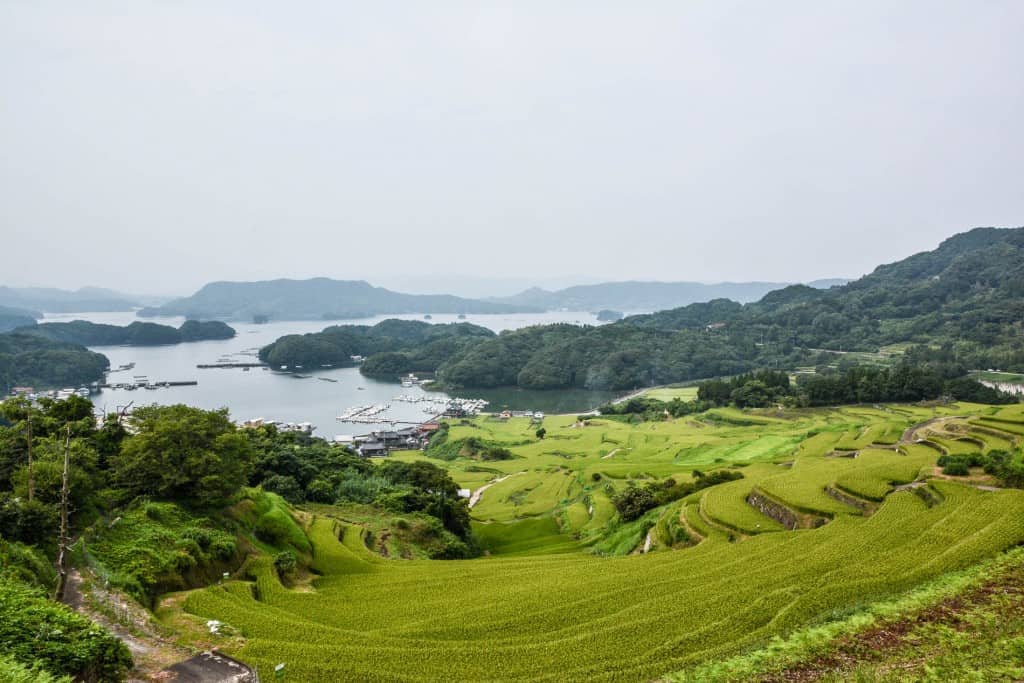
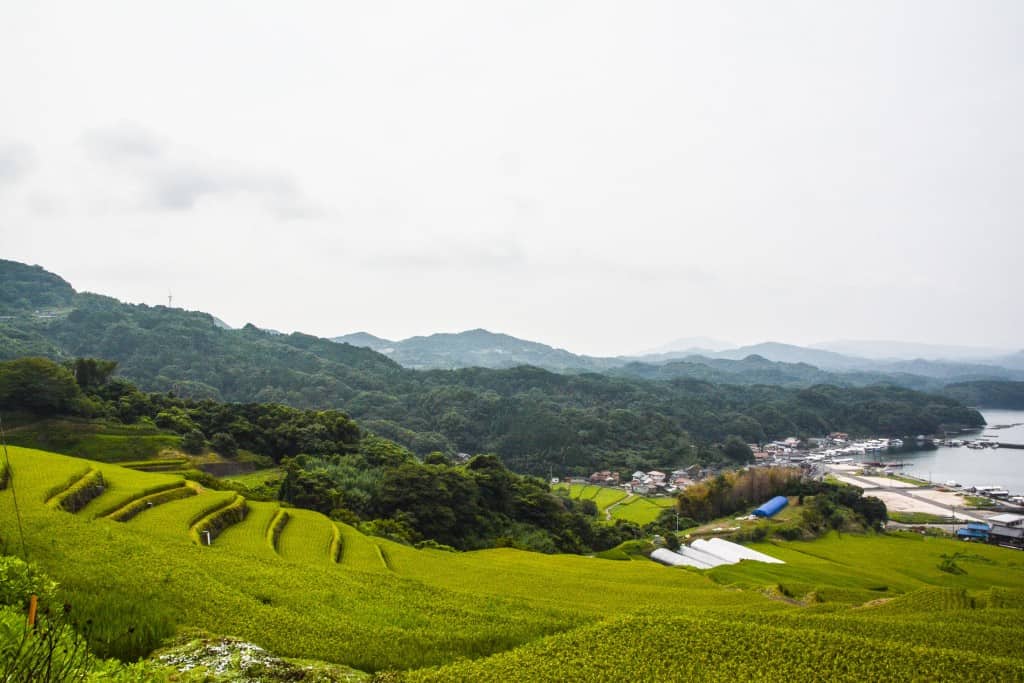
How to Get There?
- The car is surely the most convenient way to get there as you are able to move freely at your own pace, and go wherever you want. There is free parking.
Other options are: - Take a taxi from Karatsu station, it will take you only 20 minutes.
- Take a bus from Karatsu bus centre and get off at Magarikawa bus stop. The bus ride is approximately 25 minutes. From Magarikawa bus stop it is about a 10 minute walk. Keep in mind that buses do not run very often. I recommend exploring this area by car since it gives you more freedom.
Hamanoura no Tanada: One of Japan’s top 100 terraced rice fields
I think I prefer this one. The rice fields are enclosed in a valley facing the Genkai sea, it’s truly breathtaking. Hamanoura no Tanada is a rice field of almost 11.5 hectares. All the trays that unhook in this hollow form a fabulous landscape. The site is also called Senmaida which means a thousand rice fields because the farmers have subdivided the land to take advantage of the site and thus create many different levels. Like Oura no Tanada, Hamanoura no Tanada has been designated as one of Japan’s top 100 terraced rice fields by the Ministry of Agriculture, Forestry and Fisheries, and they believe that by preserving these beautiful agricultural landscapes, the ideas of traditional Japan will be preserved.
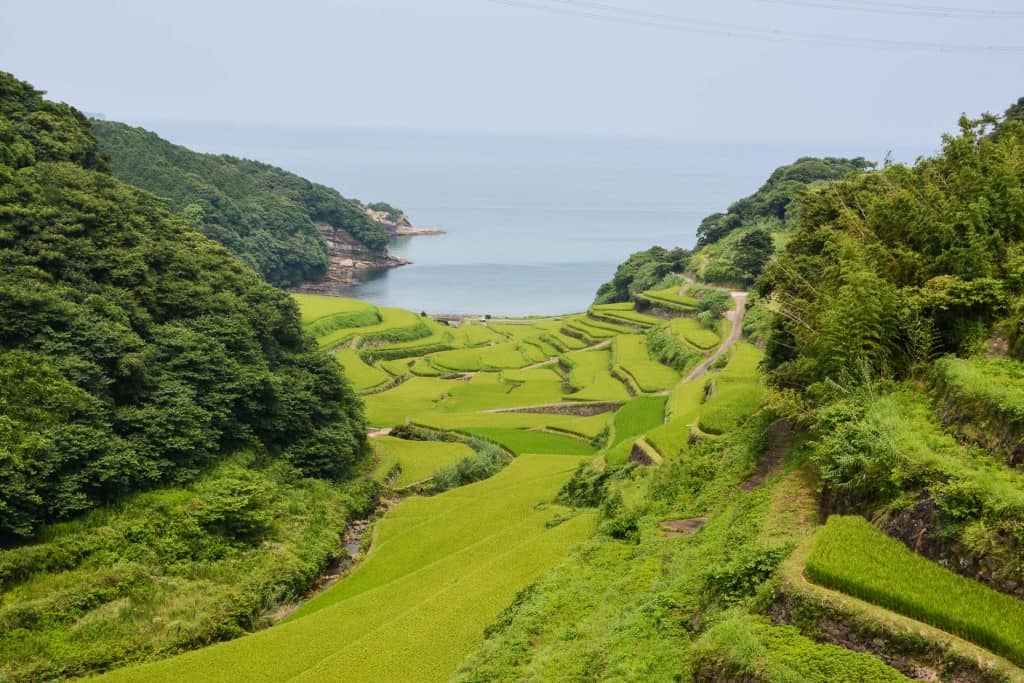
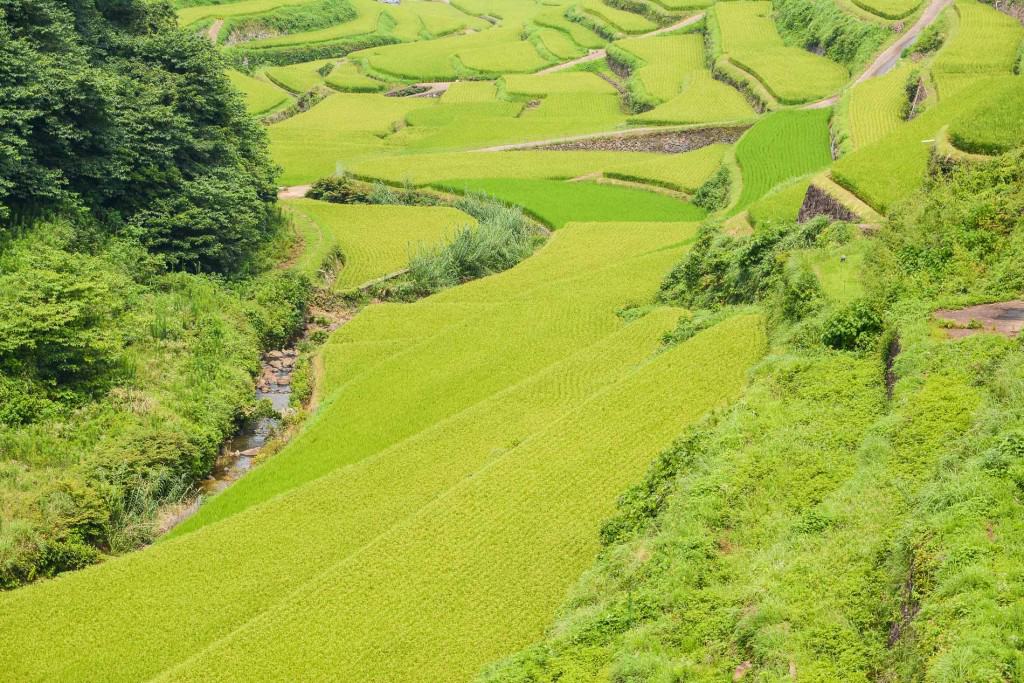
How to Get There?
- The car is surely the most convenient way to get there as you are able to move freely at your own pace, and go wherever you want. There is a parking lot and an observatory deck to fully enjoy the view.
Other options are: - Take a taxi from Karatsu station, it will take you about 30 minutes.
- Take a bus from Karatsu bus centre bound for Hamanoura. The bus ride is approximately 20 minutes.From the bus stop it is approximately a one minute walk to the Hamanoura rice fields. Keep in mind that buses do not run very often. I recommend exploring this area by car since it gives you more freedom.
The Driving Path between Two Rice Fields
The two rice fields are only 30 minutes by car from each other. On the road, you will follow the coastline. The landscape alternates between rice fields and coasts; a beautiful drive.
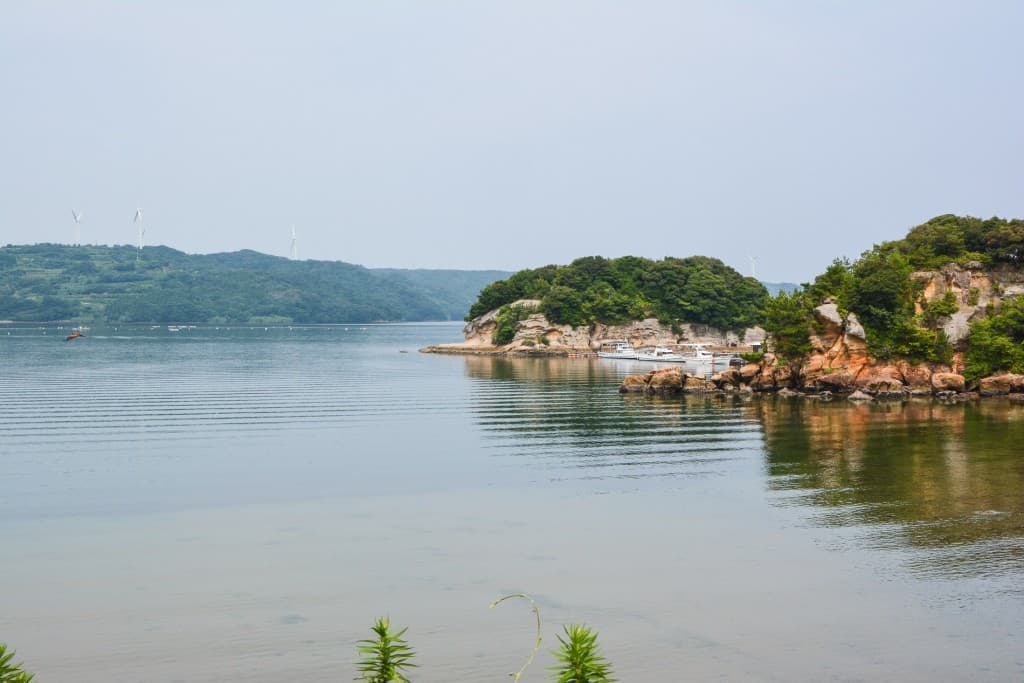
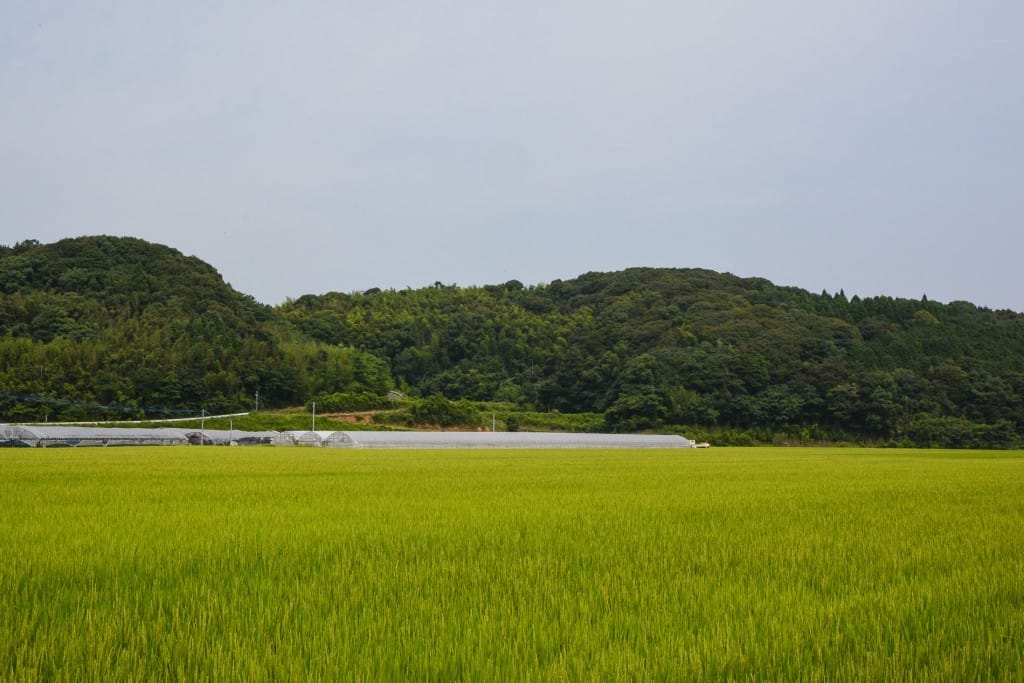
Plus More, Iroba Observation Deck
If you are driving a car, why not stop by this Iroha observatory, where you will see the bay with many small islands in the distance! On a clear day, you can even see rice fields such as Oura no Tanada on the other side of the bay. During my visit, there was quite a bit of summer mist, which prevented us from seeing the rice fields but the view was still very nice and worth the visit.
When is the Best Season to See These Rice Fields?
These two rice paddies are impressive to see all year round, and you will find the scenery is different during each season.
The best season to visit would be spring, from mid-April to mid-May. The rice paddies are filled with water from mid-April onwards and completely planted with rice in early May. During this period, the sunset on the horizon illuminates the sea and the rice fields become an intense orange for a truly unique spectacle. In summer, the strands become bright green. And they stand out from the surrounding scenery. In autumn, the fields become gold.
You might be so surprised by these changes throughout the year, so you should make the trip to admire the beauty of these rice fields!

Sponsored by Saga Prefectural Tourism Federation
Translated by: Aika Ikeda
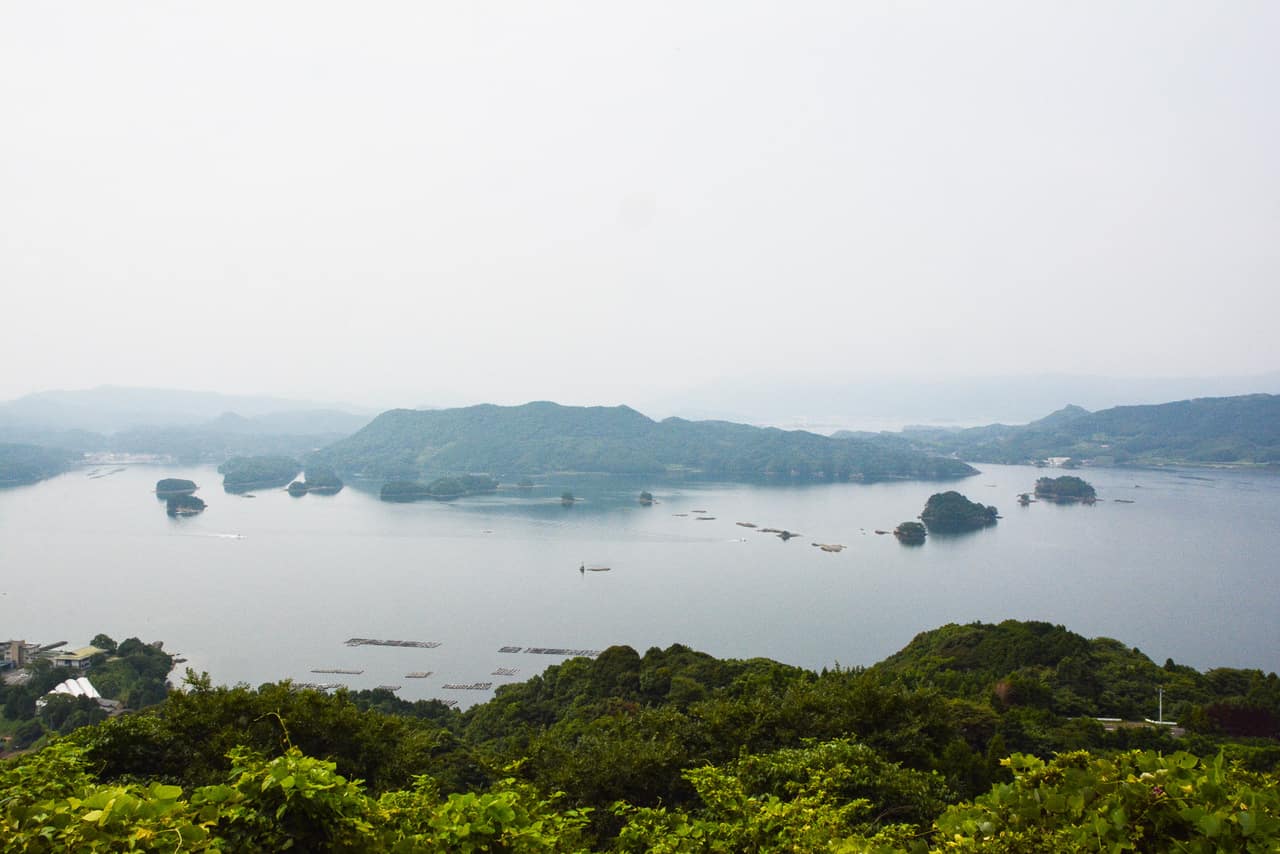
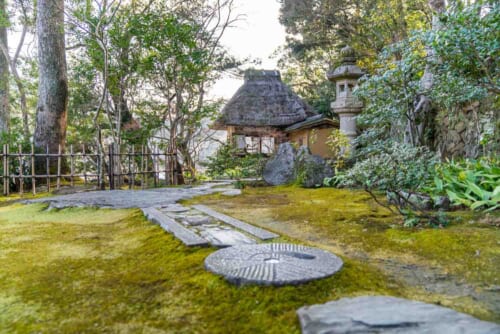



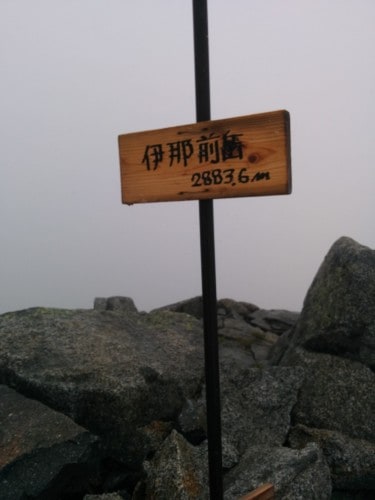


No Comments yet!